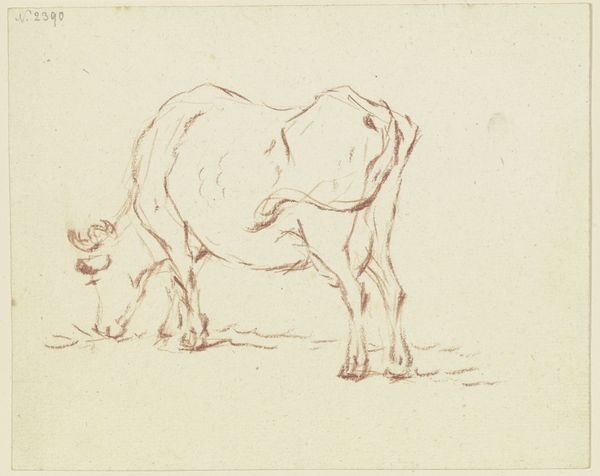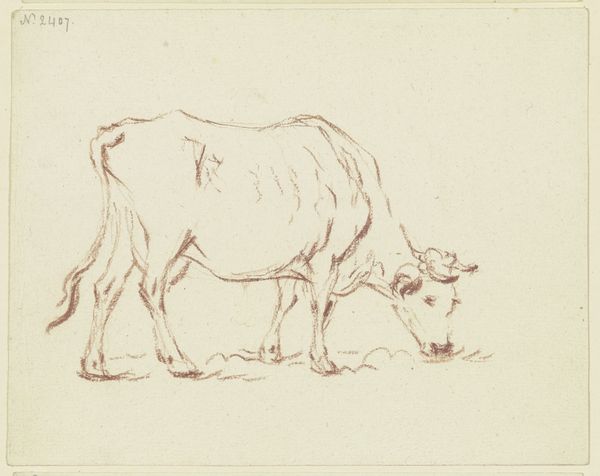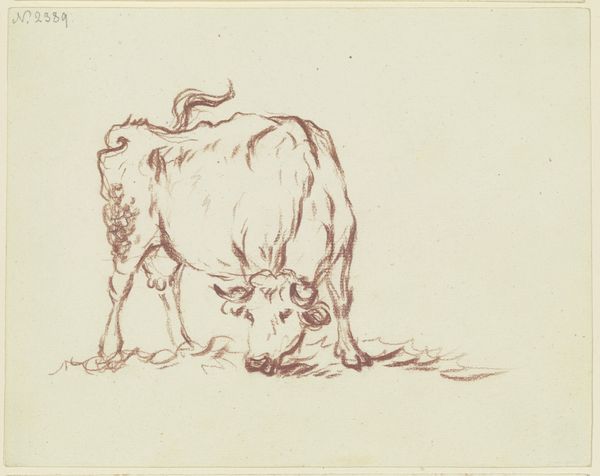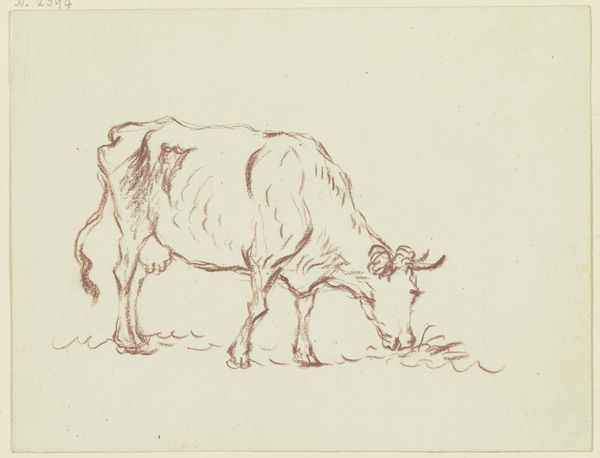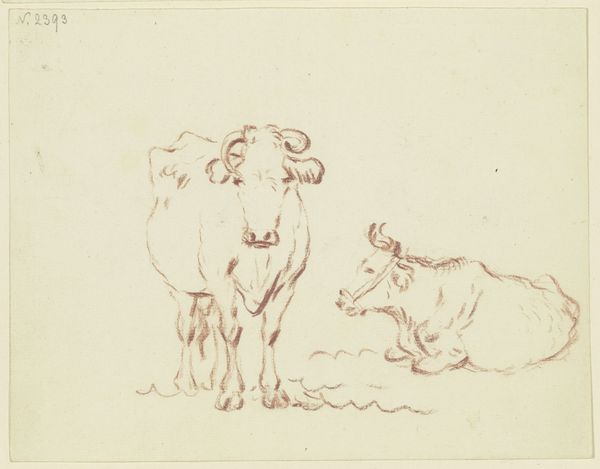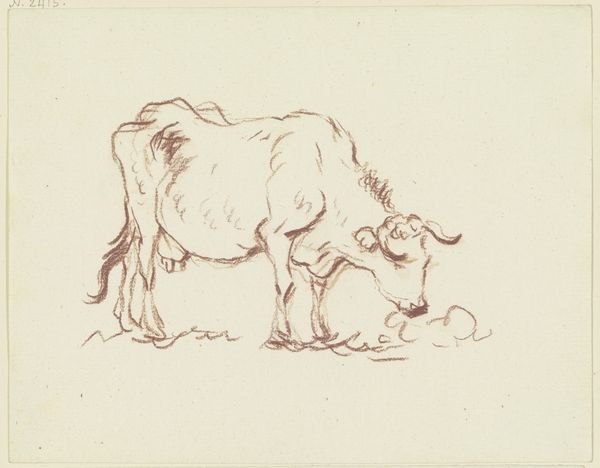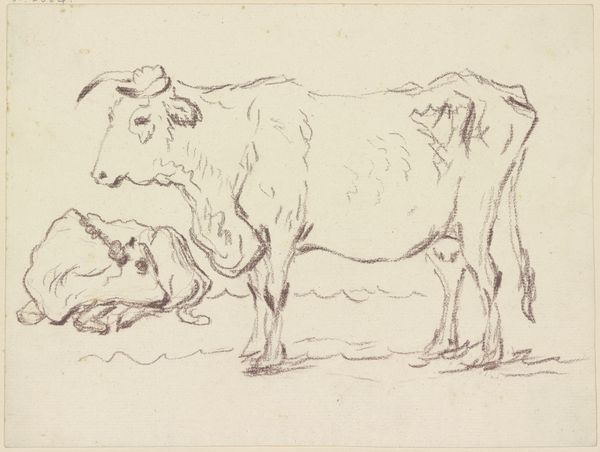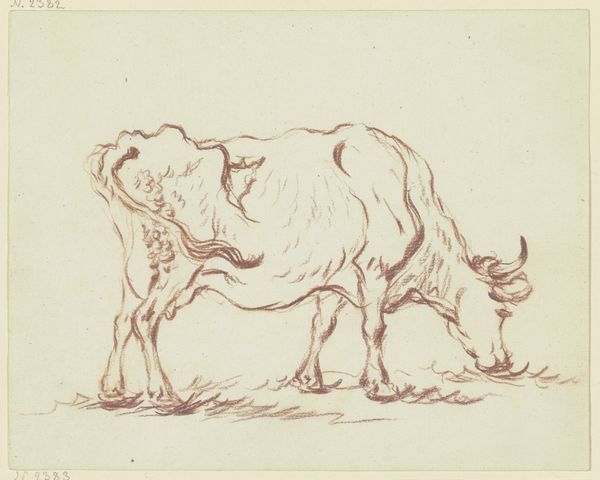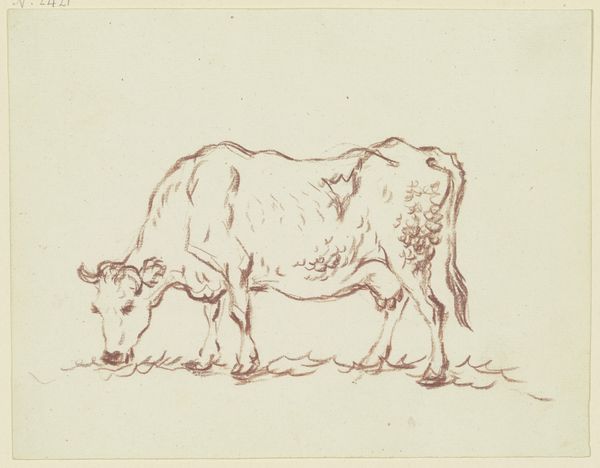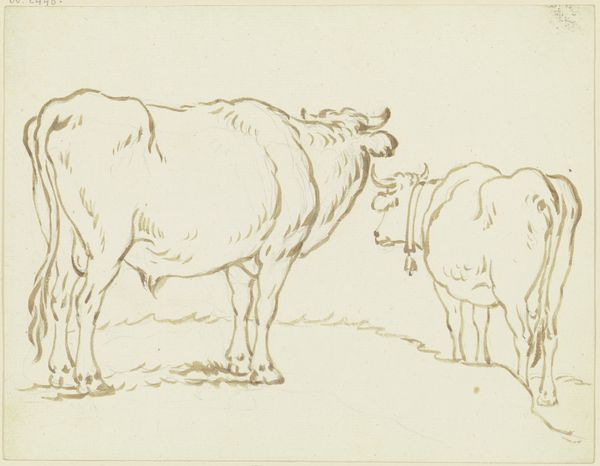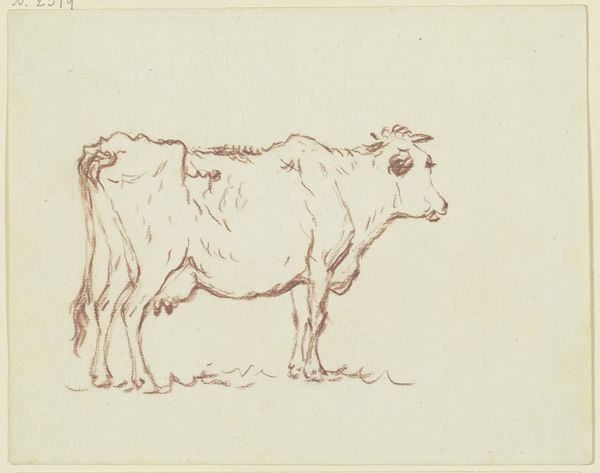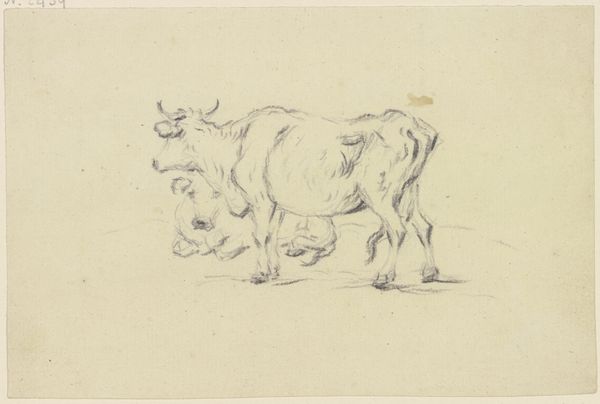
Grasende Kuh nach rechts, in leichter Verkürzung rückansichtig
0:00
0:00
drawing, red-chalk
#
drawing
#
red-chalk
#
landscape
#
etching
#
personal sketchbook
#
15_18th-century
#
academic-art
#
realism
Copyright: Public Domain
Editor: Here we have "Grasende Kuh nach rechts, in leichter Verkürzung rückansichtig," a red-chalk drawing of a grazing cow from the 18th century, attributed to Friedrich Wilhelm Hirt. I’m immediately struck by its simplicity and directness. What can you tell me about this piece? Curator: It's interesting to consider this drawing through a materialist lens. Look at the medium: red chalk. It’s a readily available, earthy material. The artist isn’t using expensive paints or precious metals. The choice speaks to accessibility and a certain democratic approach to art making. How does the choice of material influence your reading of the subject? Editor: It makes me think about the relationship between rural life and artistic practice. Red chalk seems very connected to the earth and the everyday labor of agriculture. Curator: Exactly! Consider also the function of such a drawing. Was it intended as a finished artwork or a preparatory sketch? Perhaps it’s part of a larger workshop practice, a means of training artists in the realistic depiction of animals for landscape paintings. What does this suggest about the value placed on artistic skill versus the final "masterpiece"? Editor: So, even though it's displayed as art now, its original purpose might have been more practical, tied to the workshop and the training of artisans? It shifts the focus from the individual genius of the artist to the collaborative nature of artistic production. Curator: Precisely. It pushes us to examine the social context of art creation – the role of the artist, the patronage system, and the means of production that made such images possible. It challenges this idea that art comes from this divine inspiration, focusing more on material reality. Editor: I never thought about it that way before! Focusing on the materials really opened up a different perspective on this seemingly simple drawing. Curator: Indeed! It invites us to question those boundaries between high art and the craft of image-making within a specific historical context.
Comments
No comments
Be the first to comment and join the conversation on the ultimate creative platform.
